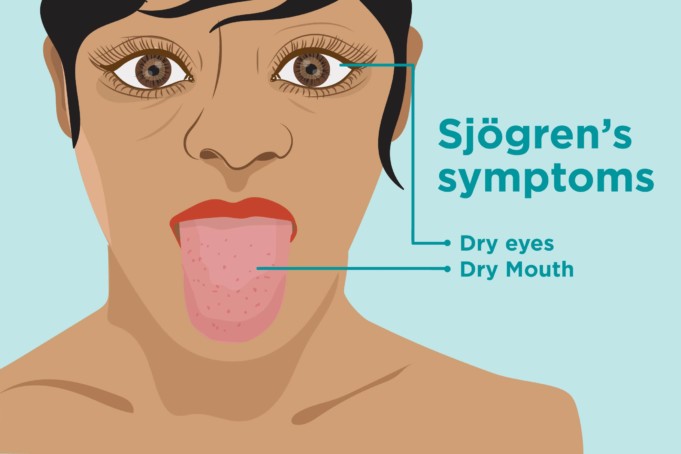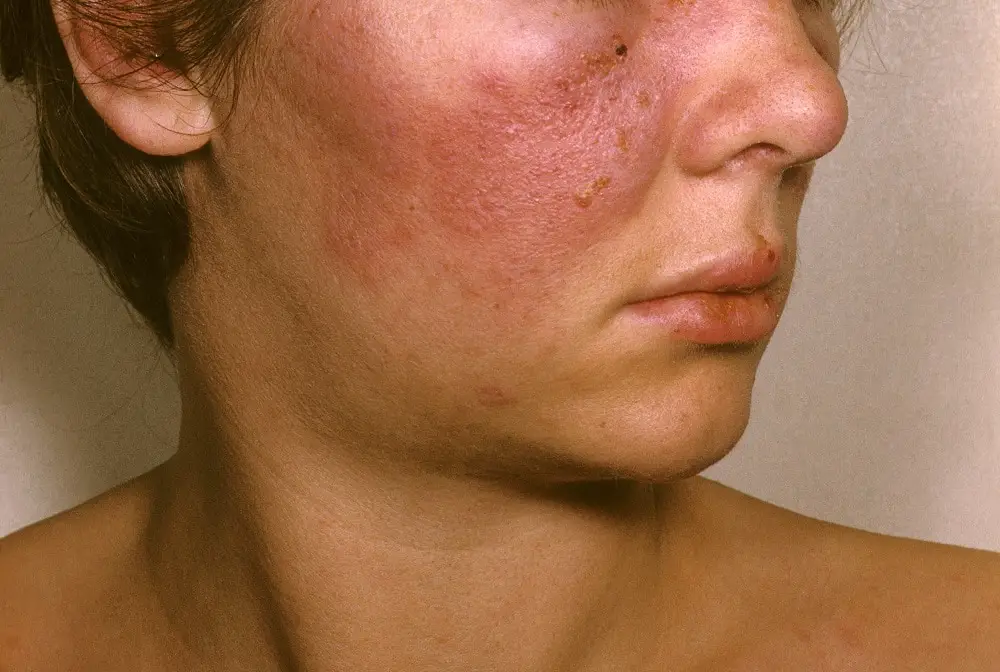Sjögren’s syndrome is a chronic autoimmune disease that affects the glands that produce moisture in the body. Autoimmune diseases occur when the antibodies of the immune system are not able to recognize some parts of the body and sees it as an alien object, leading them to attack that part of the body.
The main symptoms of Sjögren’s syndrome are dry eyes and dry mouth. Other symptoms include dry skin, chronic cough, dry vagina, and pain in the muscles and joints. Affected people have an increased risk of lymphoma – a cancer of the immune system.
There is no known cause for the condition. It is, however, believed to occur as a result of a combination of genetic and environmental factors. Sjögren’s syndrome can occur on its own or as a result of an underlying condition. The diagnosis of the disease is by blood tests and biopsy of the glands that produce moisture.
Sjögren’s syndrome has no cure. Treatment of the condition is focused on the symptoms that manifest. Medications can be used to reduce the inflammation of dry eyes. Chewing gum (preferably sugar-free) and sipping water is recommended to treat dry mouth.
Although there were earlier descriptions of symptoms of the disease by other people, the condition is named after Henrik Sjögren, who described it in 1993.
Sjögren’s syndrome affects about 0.2% – 1.2% of the population, with females being ten times more affected by the disease than males. The condition frequently occurs amongst middle-aged people; however, anyone can be affected by the disease.
Causes
There is no exact cause of Sjögren’s syndrome. However, below are several factors that could contribute to the development of the condition.
Genetic Factor
Genes can predispose one to develop Sjögren’s syndrome. Studies conducted on the polymorphisms of specific human leukocyte genes have indicated how the can lead to the development of Sjögren’s syndrome.
Environmental Factor
Exposure to certain viruses has been known to trigger Sjögren’s syndrome. Some viral proteins may mimic the molecules of cells, and this initiates autoimmunity and increases the risk of developing Sjögren’s syndrome.
Examples of viruses capable of this are hepatitis C, human T-cell leukemia virus, and Epstein-Barr virus.
Hormonal Factors
Sjögren’s syndrome is said to be more prevalent in women than in men. Sex hormones like estrogen are believed to contribute to the development of Sjögren’s syndrome.
Androgen – a group of sex hormones found predominantly in males and responsible for the development of male traits – are considered to prevent autoimmunity.
Signs and Symptoms of Sjögren’s syndrome
The most common symptom of the disease is a dry mouth. This increases one’s chances of getting cavities. Dry mouth can also make it difficult to swallow or speak.
Another symptom of the condition is dry eyes. This causes inflammation of the eyes, which feels like a burning sensation, or there is something in the eyes.
Other symptoms of Sjögren’s syndrome include;
- Vaginal dryness
- Fatigue
- Dry and scaly skin
- Rashes
- Muscle and joint pain
- Inflammation of the kidneys and lungs
Constant inflammation caused by the disease would require medication to prevent damage to the organs.
Risk Factors
Sjögren’s syndrome has no specific risk factor. The disease is ten times more likely to affect women than it is to affect men. Women who have gone past menopause are likely to develop the condition.
Currently, there is research being done to observe the role estrogen plays in the development of Sjögren’s syndrome. Furthermore, a family history of the condition increases one’s risk of developing the disease.
The disease is associated with other medical conditions, some of which are rheumatic or autoimmune disorders. These include multiple sclerosis, celiac disease, spondyloarthropathy, fibromyalgia, lupus, and autoimmune thyroiditis.
Diagnosis
Sjögren’s syndrome has a range of symptoms that may manifest in a patient, and these symptoms are usually similar to those of other conditions.
For example, dry mouth and dry eyes are symptoms common in people above 40. These symptoms can be diagnosed as being related to age and not because there is an underlying condition like Sjögren’s syndrome.
Also, the treatment of Sjögren’s syndrome is approached in different ways, making the diagnosis of the condition difficult. Therefore, there is no one true test for Sjögren’s syndrome.
Sjögren’s syndrome is typically grouped as either ‘primary’, which occurs by itself, or ‘secondary’, which occurs when another connective tissue disease such as dermatomyositis and vasculitis is present.
To diagnose Sjögren’s syndrome, the doctor would run a series of tests, which include blood tests to check for antibodies associated with Sjögren’s syndrome and physical exams. A look at the patient’s medical history would also be required.
Other tests to be conducted include lip biopsy to check the production of saliva in the glands and eye tests to check for moisture in the eyes.
Treatment
The primary treatment option for the disease is medication. This can be used to manage the symptoms of the condition.
Drugs that can be prescribed for the treatment of dry eyes include Restasis, cequa, lacrisert. Restasis and cequa are eye drops that are applied twice daily. While lacrisert is a small rod-shaped drug that is placed in the eye with specialized equipment, usually twice a day.
Sugar-free chewing gum and regularly sipping water can help with the dry mouth. Other drugs that can be used include salagen, evoxac, and neutrasal.
Living with Sjögren’s syndrome
Sjögren’s syndrome is a lifelong disease with no cure. Managing your symptoms is necessary to live a long and healthy life. The following are ways by which you can manage the symptoms of the disease
- Brush and floss regularly to avoid cavities. There should be regular checkups with the dentist.
- The use of humidifiers and vaporizers at night is encouraged to relieve inflammation from dry eyes.
- Use warm water for bathing or showering. Let the water drip and dry off your body instead of toweling after the shower.













